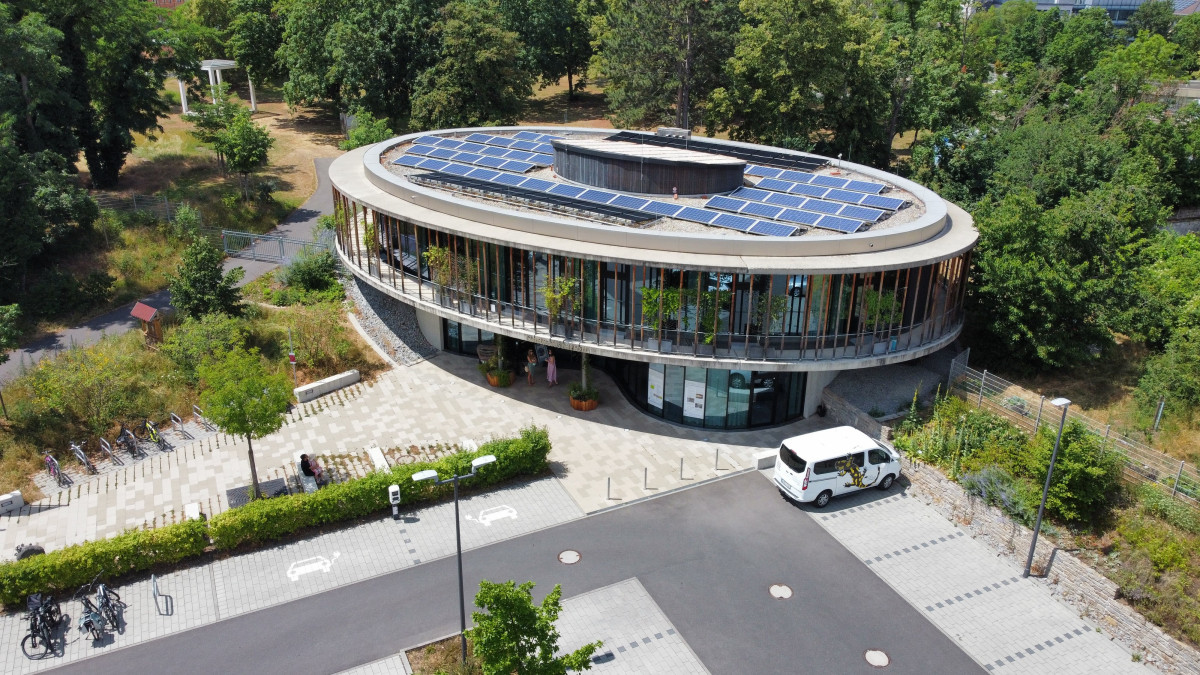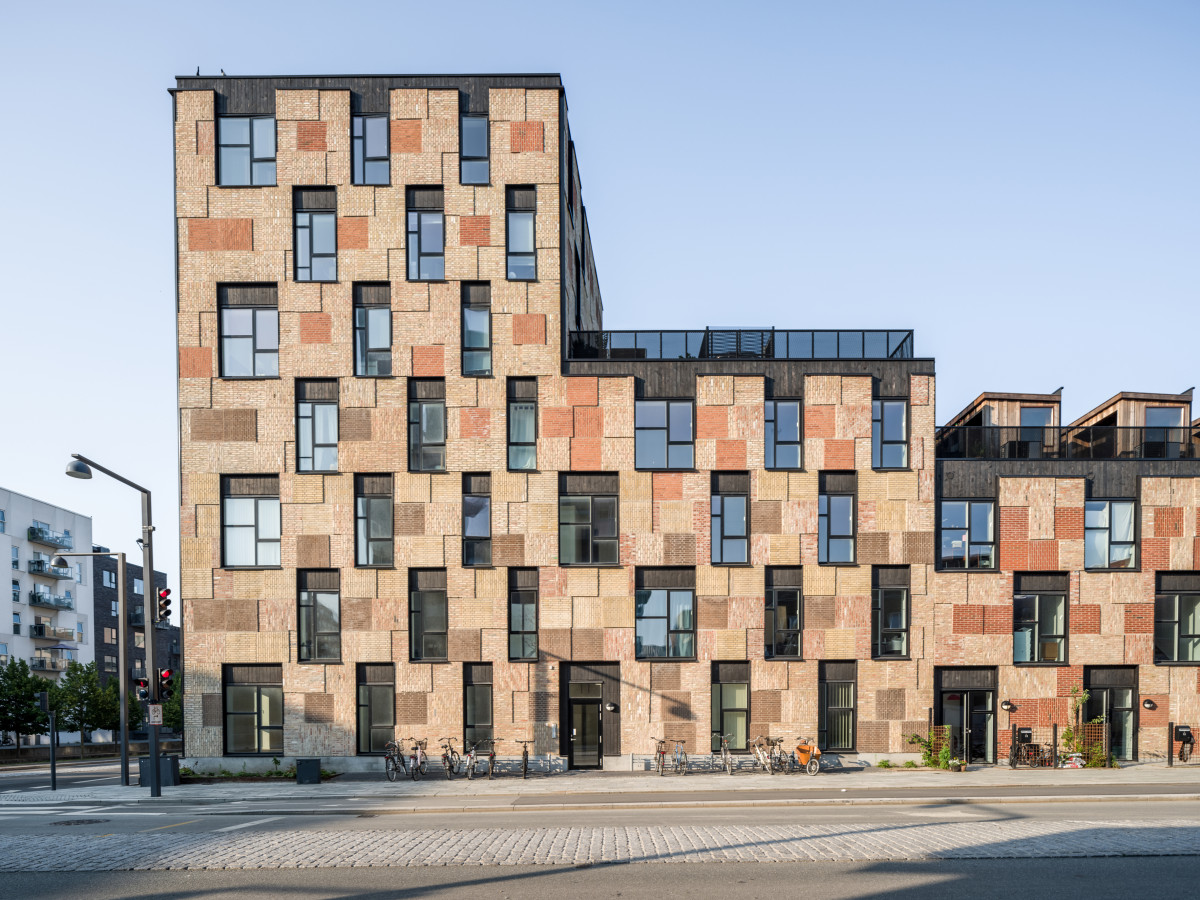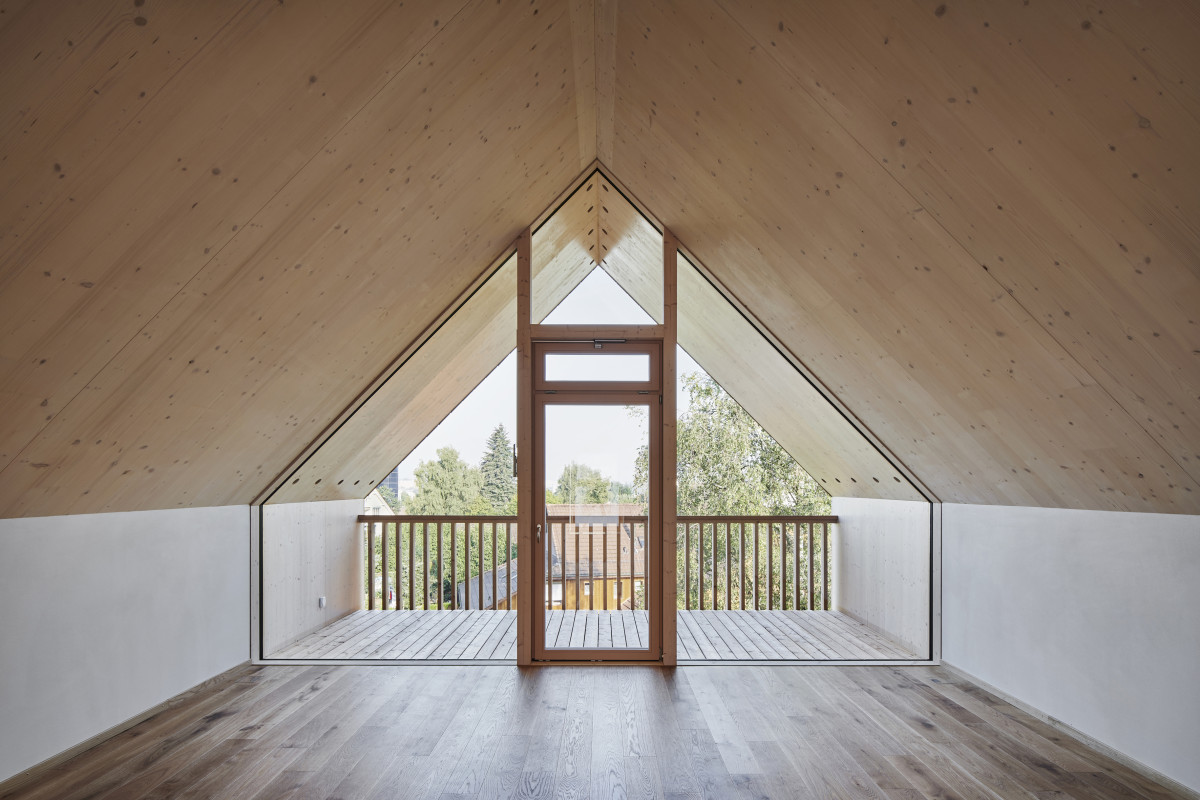Dirty construction habits block path to truly climate-friendly buildings
***This article will form part of a dossier on the climate and environmental impact of construction materials. More accompanying articles, interviews and factsheets will be published in the coming weeks.***
The climate impact of our homes, schools, shops and offices goes much beyond the damaging greenhouse gases that heating and cooling them emits. Buildings begin polluting long before we begin using them and will continue to do so when they have to be torn down.
The whole polluting bill of these spaces – what is known as buildings' "embodied emissions" – includes producing the materials needed for floors, walls and ceilings and their transport to the construction site, as well as the construction process, renovations and, ultimately, deconstruction or demolition.
These emissions have largely remained an afterthought in Europe's efforts to reduce buildings' climate impact, which have focused on reducing the energy needs when they are in use.
"We will only reach the climate goals if the construction industry’s large climate footprint is drastically reduced, so it is urgent that the industry starts using, recycling and reusing environmentally friendly construction materials," said Tine Lange, founder of the Danish consultancy Responsible Assets, which advises the construction industry in the country.
Buildings are responsible for around 40 percent of global energy-related carbon emissions, with 28 percent coming from the operation of buildings and 11 percent being embedded in materials and construction.
We know what we have to do already today. We don’t have to wait for new technology – we can do it.
A more careful approach to the use of materials could save around 80 percent of the associated emissions, according to the European Commission. Moreover, the impact of rethinking which (and how) construction materials are used goes beyond reducing emissions: Buildings consume large amounts of resources – about half of all mined materials in Europe goes to the sector – and construction generates over a third of the bloc's total amount of waste.
Cement alone accounts for around eight percent of global emissions. If it were a country, it would be the third-most-polluting on earth after China and the U.S., followed then by the European Union as a whole.
Around 25 percent of the emissions from the EU's current building stock are embodied in materials, when looking at the entire life cycle. Globally, embodied emissions across buildings’ lifecycles are projected to surge to 50 percent by mid-century, as buildings become more efficient and the energy they use cleaner.
This is already the case in places such as Denmark, a frontrunner in sustainable practices, and where buildings are especially energy efficient. The impact of construction materials there is typically two to four times higher than that of the emissions released during a building's use, a 2021 study from Aalborg University found.
Emissions, raw materials and waste from EU construction
- Buildings are responsible for around 40 percent of global energy-related carbon emissions, with 28 percent coming from the operation of buildings and 11 percent being embedded in materials and construction.
- The cement and steel industries – both common building materials – respectively account for around four and five percent of EU carbon emissions. According to a 2022 report by think tank Agora Industry, 36 percent of the EU’s steel emissions and 50 percent of its cement emissions can be attributed to buildings and construction.
- Construction products in general are among the most carbon and energy intensive in the EU market, with an average footprint of 250 million tonnes of carbon each year.
- Buildings are responsible for 50 percent of EU resource extraction and consumption, requiring 1.6 billion tonnes of raw materials.
- Buildings and construction are also responsible for more than 30 percent of the EU's total waste generated per year.
- Recycling rates for construction and demolition waste range from less than 10 percent to over 90 percent. Cross-country comparisons are difficult, as countries apply different definitions to what constitutes construction and demolition waste.
Inertia is the biggest hurdle between sustainability as a norm and business as usual
It is not necessarily more expensive to build more sustainably. Especially when thinking beyond the pure construction costs, "a fair comparison over the entire service life of a building also shows the economic advantage of sustainable construction," said Eike Roswag-Klinge, architect and professor at TU Berlin, adding that this also reduces operating costs.
Inertia, more than costs, means "business as usual" is the done thing when it comes to new construction and renovations. For example, building sustainably requires thought from the design process (designing for easy repair, modularity, durability, long life, lightweight) to the choice of materials (low embodied carbon, local, second-hand). It is possible, but requires better education, information – so builders can easily choose the least impactful materials in their projects, for example – and policies.
Separately, demolishing a building with the aim of reusing its materials requires an audit, a different deconstruction process, the mapping of the saved materials for their re-use potential, and then their storage and sale – not impossible tasks, but certainly an added effort, and one that needs to be coordinated between stakeholders.
Moreover, in many places, including in Germany, it is often cheaper to demolish and rebuild than to refurbish, Peter Mösle, head of the environmental consulting institute EPEA, told news site Focus. This is despite the fact that renovations generate 50 to 75 percent fewer emissions than new constructions.
"A signal that the EU market for low-carbon building solutions is about to scale up is needed for firms to enable investments and transition towards a sustainable supply of basic materials," a 2021 report by think tank Agora Energiewende found. This is true for constructions around the world: policy and financial support is needed to drive the widespread adoption of renewable, bio-based materials, according to a UN report.
Two key policy instruments tackle the climate impact of construction in the EU
- The EU has begun to tackle the issue of embodied carbon with revisions to the Energy Performance of Buildings Directive (EPBD) and the Construction Products Regulation (CPR).
- The EPBD revision, which still needs to be formally adopted, will require governments to calculate the so-called Global Warming Potential (GWP) – greenhouse gas emissions – across the entire lifecycle for all new buildings from 2030.
- The revision of the CPR was intended to incorporate sustainability requirements into product standards, and will require manufacturers to disclose environmental information for the first time.
- However, environmental groups criticised the agreement, arguing that it covers only global warming potential and ignores other environmental impacts such as water and resource use, chemicals, and land use.
- Separately, Environmental Product Declarations (EPD) are a useful tool to help builders choose the most sustainable materials, as they provide a product overview and life cycle assessment data. They currently are a voluntary tool for construction material manufacturers, but are relevant to certify the sustainability of buildings. Environmental groups have called for these declarations to include information on a product's circularity and toxicity, and not only CO2.
- Green public procurement requires public bodies to purchase goods, in this case buildings, taking into account the environmental impact throughout their lifecycle, instead of awarding contracts based on price alone. It is also a relevant tool to drive demand for low-emission buildings. The EU will develop green public procurement rules for construction products towards the end of 2026.
Europe has a standardisation problem
Green NGOs, architectural associations and progressive industry players agree that the bloc's climate targets will slip out of reach if policymakers do not regulate the full carbon footprint of buildings now, and implement a so-called life-cycle approach to assess the climate and environmental impact of buildings from conception to deconstruction.
"The uptake of the use of reused or recycled materials could be improved and sped up if this was prescribed by law, but there is a strong lobby against this," Anna Braune, head of research and development at the German Sustainable Building Council (DGNB), told Clean Energy Wire, adding that Europe has a big problem regarding its existing building standards – a sentiment shared by others.
"The standards for construction products are made by national standardisation bodies, which are mainly made up of industry players. So, they are literally writing their own rules when it comes to standards on their own products," Laetitia Aumont, policy officer at the European Environmental Bureau (EEB), told Clean Energy Wire. "There have been no environmental requirements at all for building materials, and so far, the industry has not set them on a voluntary basis."
Norms and standards for alternative materials are important for trust-building, Fabian Hörmann, author and founder of regenerative architecture firm YR22, told Clean Energy Wire. In Germany, progress is delayed because there is no standardised understanding of the requirements of sustainable construction, according to a legal opinion the DGNB commissioned.
Yet beyond policy, geopolitical crises and the effects of climate change have cast a spotlight on the need to re-think how the industry sources and uses its materials. "In the past two years, there have been more discussions about recycling materials than ever before," DGNB's Braune said. "We need to rethink routes for primary raw materials and understand that primary resources equal finite, risk-impregnated resources. This is partly why we need to shift to a circular economy."
Thinking in terms of lifecycles is also important for renovations
Europe's biggest leverage for climate action in the building sector lies in its existing stock. This means making full use of the spaces that already exist, salvaging as much as possible from the buildings that have to go, and most importantly, large-scale renovations.
Europe is covered in resources that don't need to be extracted, architect Hörmann said. "The existing building stock is our biggest lever. Abandoned buildings in villages, for example, are ultimately full of resources."
With its "renovation wave," the EU aims to steeply accelerate its sluggish energy renovation rate and improve the performance of 35 million buildings by 2030 – just shy of Germany's entire building stock. "We have to seriously think about the CO2 emissions from renovation measures, because we want to do this on a big scale," DGNB's Braune said. To truly make buildings climate friendly, energy efficiency renovations should not become a climate problem.

The Netherlands, Denmark, France, Finland and Sweden are all frontrunners in decarbonising the building sector beyond operational energy. They either require the reporting of lifecycle carbon emissions or have set limits to the environmental impact of buildings across their entire life, calculating the emissions from the materials used, materials replaced, the building's lifespan, and the gross floor area. The result is a carbon number which can be pinned to each square meter per year, and which is tightened over time.
"The standards for new builds set the tone for decarbonising the existing stock: they can and should become a benchmark for renovation," think tank Buildings Performance Institute Europe (BPIE), which focuses on the energy performance of buildings, wrote in a 2021 policy briefing.
The most effective way construction can reduce its climate impact is by constructing less
Ultimately, the most effective option for environmental and climate protection is not to construct, especially on greenfield sites. Considering all the infrastructure required to connect a new housing development – including roads, water supply, sewage systems – even sustainable projects can end up with a hefty carbon footprint.
"Sufficiency policy for the built environment is one aspect that has been completely forgotten about," EEB's Aumont said. "While it's important to increase efficiency and renewable uptake in homes, we also need to tackle the demand side and reduce the strain on all of our resources, including materials, water and energy."
Lisa Graaf, project manager at think tank BPIE, agrees. "It is important to make better use of existing resources," she told Clean Energy Wire. Offers and support – also political – should prioritise the efficient use of existing space, she said. This includes filling vacant buildings, converting single-family homes that have become too large, or converting discarded office spaces into residential buildings.
A project in Poland, for example, collected data on vacancies to make them available for social housing, while in Belgium the organisation 1Toit2Ages (which roughly translates as "one roof, two generations") provides accommodation for students in unused rooms in older people's homes. In a southern German city, the Wohnraumagentur focuses on optimising the use of existing properties.
"The wonderful thing about these examples is that they are not only an effective solution for reducing the emissions, resource utilisation and land consumption associated with new construction, but at the same time help to solve many social issues, such as the housing shortage, lack of affordable housing, and also issues of loneliness," BPIE's Graaf said.

Germany could meet just over 80 percent of its target of building 400,000 new homes per year (which it has failed since setting it) by converting offices, using vacant homes in rural areas, adding storeys and dividing under-occupied single family homes, according to a report by research institute ifeu.
"Converting unused vacant buildings into homes has a huge potential to answer some of the challenges that the housing sector faces – especially for the cities that have big shortages," EEB's Aumont said. "Right now, however, there's nothing in terms of policy – EU or national – that goes in this direction."
Stopping construction projects is unrealistic, and the existing building stock – 75 percent of which is energy inefficient and will largely still stand in 2050 – is by far not good enough to reach climate targets. Therefore, "it's about building right and making changes with a holistic approach," DGNB head Johannes Kreißig told Clean Energy Wire.
Sustainability has social, economic, and environmental aspects, he explained. But Europe has the resources, knowledge and innovative technologies to address all of them all together. "We know what we have to do already today," Kreißig said. "We don’t have to wait for new technology – we can do it."


